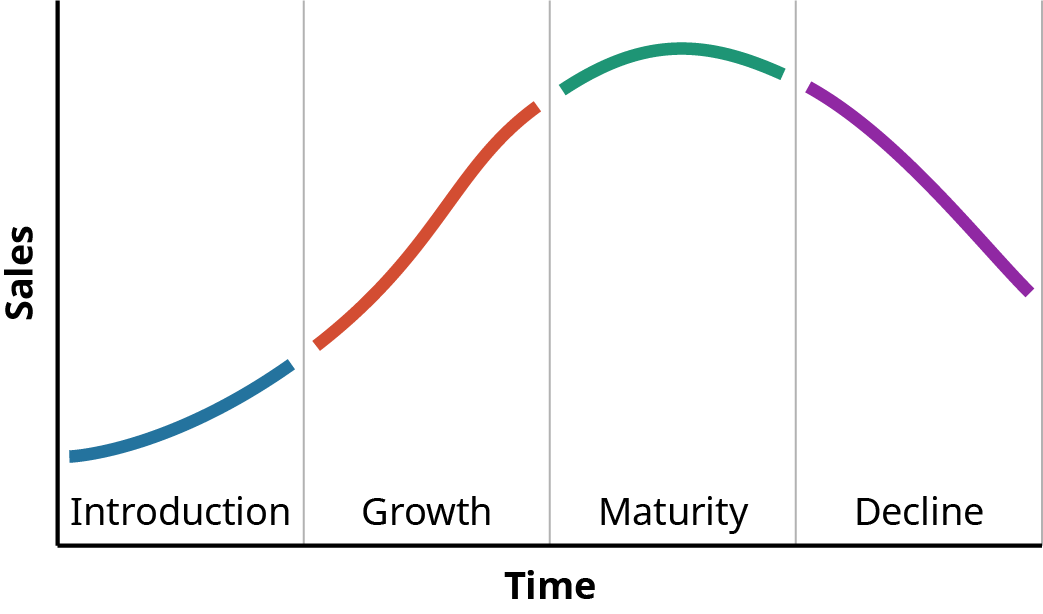The Product Life Cycle
Learning Objectives
By the end of this section, you will be able to:
- Define the product life cycle.
- List and describe the stages of the product life cycle.
The Product Life Cycle
Have you ever wondered what happens after a new product launch? Is the product successful right away, or does it need a little help from marketing to realize its potential? Then, as the product matures, does it stay on the shelf, or does it have a natural endpoint? The product life cycle (see Figure 9.6) maps the stages a product goes through, tracking its sales and profitability.
Figure 9.6 The Product Life Cycle (attribution: Copyright Rice University, OpenStax, under CC BY 4.0 license)
The Product Life Cycle Stages
The product life cycle begins in the introduction stage. This is when consumer awareness is building and sales are starting to grow. The marketing investment is high as brands invest heavily in advertising and sales promotion to encourage trial. Profitability is low due to costs to launch and scale a new product. What products can you think of that are in the introduction stage of the product life cycle?
Once a product catches on in the marketplace, it enters the growth stage of the product life cycle. The growth stage is characterized by increasing sales and the potential for copycat brands to enter the market once they see revenue and profitability. In addition, products require less marketing and distribution investments during the growth stage, making them more profitable. However, a brand can decide to invest in product improvements and distribution, which may decrease profitability in the short term in exchange for long-term gain. When hoverboards were new to the market, they experienced explosive growth that quickly tapered off.
The product enters the maturity stage when sales growth slows and profitability levels taper off. The maturity stage is typically the longest stage of the product life cycle, with products remaining in this stage for years or even decades. Profitability may remain if the brand has a solid competitive advantage or decline if too many competitors enter the market. Marketing investment can increase at this stage if the brand has a rival, and product modification can alter the product to meet consumers’ needs. Yet often a brand will retain a low level of marketing during the maturity stage to remind consumers of its benefits. Kraft Macaroni & Cheese is an example of a product that has a solid place in the market and has stabilized as a mature product.
Eventually, most products enter the decline stage. The decline stage is characterized by a significant decrease in sales and profitability. Sometimes the decline occurs because the market has changed: technology has evolved, consumer tastes have shifted, or the need that the product satisfies is no longer relevant. Other times, the product is pushed out by rising costs or competitors. Many companies report their earnings quarterly and do not want to keep an unprofitable brand in their portfolio. As a result, companies typically try to divest a product in the decline stage. Another company may pick up the brand, invest in it, and bring the product back to a growth or maturity stage. Apple’s iPod entered the decline stage when the popular iPhone was introduced, bringing a host of features plus music.
It is important to note that products do not always travel through the product life cycle at a linear rate, nor do they all travel through all product life cycle stages. For example, a product can be introduced and never gain traction, so it goes directly from introduction to decline. Or a product might gain popularity rapidly during the growth stage and then meet a quick decline. This phenomenon occurs when products are fads.


